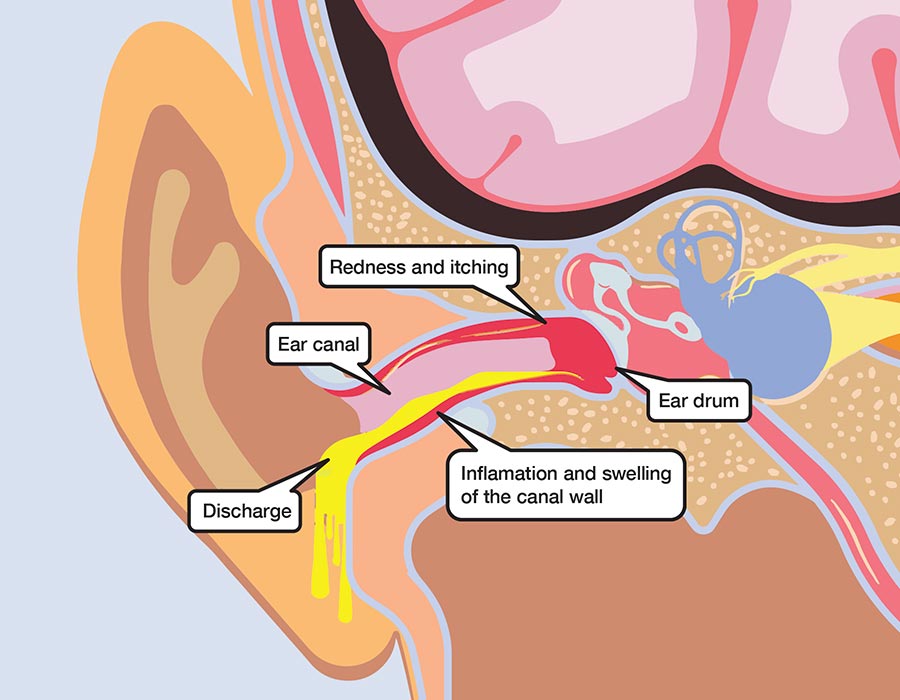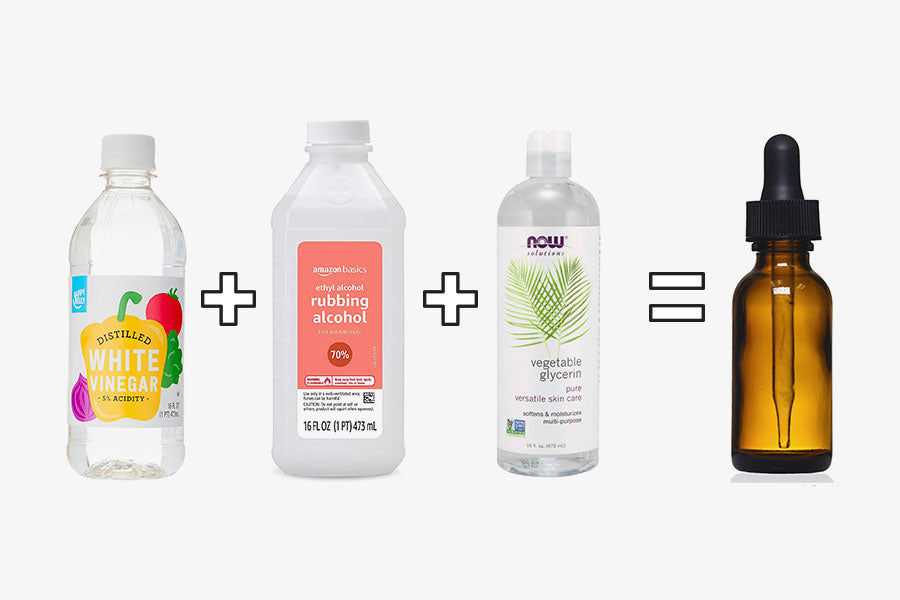How To Prevent Swimmer's Ear (Otitis Externa)
We've compiled expert advice, practical tips, and preventive measures to help you safeguard your ears and prevent swimmer's ear from interrupting your time in the water.
What is swimmer's ear?

Swimmer's ear, also known as otitis externa, is an outer ear infection or inflammation of the ear canal, the passage that leads from the outer ear to the eardrum. It typically occurs when water gets trapped in the ear canal, creating a moist environment that allows bacteria or fungi to thrive.
The infection can cause symptoms such as:
- Itching in your ear canal.
- Slight reddening can be observed inside the ear.
- Small discharge of clear and odorless fluid.
- Mild discomfort in the ear that can be exacerbated by pulling on the outer ear or pressing on the small bump in front of the ear.
Who is effected by swimmer's ear?
Swimmer's ear is more common among swimmers, snorkelers, scuba divers, surfers and other individuals who frequently expose their ears to water. Swimmer's ear can also occur due to other factors like excessive moisture, skin conditions, or injury to the ear canal. Prompt treatment and preventive measures are important to manage and avoid swimmer's ear.
Swimmer's ear prevention
Are you tired of the discomfort and pain caused by swimmer's ear. These tips will keep swimmer's ear at bay and enjoying your time in the ocean or swimming pool without the worry of ear troubles.
1. Use eardrops:
Eardrops are a reliable solution for preventing swimmer's ear. By forming a protective barrier, they repel water and bacteria, keeping the ear canal dry and free from infections. The gentle formula maintains ear health, reducing inflammation and discomfort.

Buy now: Amazon
We highly recommend BigWave Drops, a unique formulation distinguished from typical eardrops that predominantly contain isopropyl alcohol. BigWave Drops feature bioactive turmeric with potent anti-inflammatory properties, lysine for skin repair, olive oil for healing and moisturizing, and acetic acid to maintain optimal ear pH balance.
2. Keep your ears dry
After swimming or any water-related activities, make sure to dry your ears thoroughly. Use a soft towel or a hairdryer on the lowest setting, held at least 12 inches away from your ear, to gently remove any moisture. Tilt your head to each side to allow water to drain out naturally.
Even if you're not swimming, water from showers can still enter your ears. After showering, use a towel to gently dry the outer part of your ears. Tilting your head from side to side can help remove any trapped water.
3. Use swim caps or dive hoods
Swim caps or dive hoods create a tight seal over the ears, minimizing water entry and reducing the risk of swimmer's ear. By acting as a protective barrier, they prevent moisture accumulation in the ear canal and shield against bacterial or fungal infections, ensuring a safer and more enjoyable swimming or diving experience.
4. Use earplugs
Using earplugs while swimming or diving creates a barrier that blocks or limits water from entering the ear canal, thus preventing swimmer's ear. Earplugs serve as a protective measure, reducing the risk of moisture accumulation and subsequent ear infections during aquatic activities.

Earplugs for swimming: Mack's AquaBlock Swimming Earplugs
Mack's AquaBlock is recognized as the official earplugs of U.S Masters Swimmers and widely recommended by doctors worldwide. They have a triple flange design which creates a personalized fit and provides maximum effectiveness.
Buy now: Amazon
Earplugs for scuba and freedivers: Doc's ProPlugs
Specially designed for scuba divers and freedivers, Doc's ProPlugs offer innovative solutions. These vented earplugs reduce "ear squeeze" by facilitating equalization between the outer and middle ear, preventing infections, vertigo, and thermal reactions.
Buy now: Amazon
5. Maintain good ear hygiene
Keep your ears clean by gently washing the outer part with mild soap and water. Avoid using harsh or scented soaps that can irritate the skin. Remember, the goal is to maintain the natural balance of your ear's protective mechanisms.
6. Avoid inserting objects in your ears
Refrain from using cotton swabs, bobby pins, or any other objects to clean your ears. These can push wax deeper into the ear canal and increase the risk of damaging the delicate skin, making it more susceptible to infection. Let your ears naturally clean themselves, as they are designed to do.
7. Avoid swimming in polluted water
Exposing your ears to contaminated water increases the risk of developing infections. Be cautious when swimming in lakes, rivers, or other bodies of water that may have poor water quality.
8. Seek medical advice for underlying conditions
Certain factors, such as eczema, dermatitis, or excessive earwax buildup, can increase the susceptibility to otitis externa. If you have any underlying ear conditions, consult with a healthcare professional for proper management and preventive measures.
Homemade solution for swimmer's ear

Unlock the secret to combating swimmer's ear with a homemade remedy straight from the playbook of the Navy. This powerful DIY solution, formulated with alcohol, vinegar, and glycerin, is an effective and trusted method to alleviate symptoms and restore comfort.
Ingredients:
1 part rubbing alcohol (isopropyl alcohol)
1 part white vinegar
1 part glycerin
Instructions:
- Mix equal parts of rubbing alcohol, white vinegar, and glycerin in a clean container. For example, you can use 1 tablespoon of each ingredient.
- Stir the mixture well to ensure all ingredients are thoroughly combined.
- Using a clean dropper or syringe, carefully pour a few drops of the solution into the affected ear.
- Gently tilt your head to the side to allow the solution to reach the ear canal. Stay in this position for a few minutes.
- Slowly raise your head and allow any excess solution to drain out onto a towel.
- Repeat the process two to three times a day, or as recommended by your healthcare professional.
This homemade solution can help maintain proper ear hygiene and create an unfavorable environment for bacteria and fungi. However, it's important to note that homemade remedies may not be suitable for everyone or for severe cases of otitis externa. It's always best to consult with a healthcare professional for an accurate diagnosis and appropriate treatment plan.
Conclusion
Remember, prevention is key when it comes to avoiding otitis externa. By following these simple instructions and adopting healthy habits, you can greatly reduce the chances of getting swimmer's ear. This way, you can enjoy your swim, scuba trip, snorkeling holiday, or any other special water occasion without any worries of it being spoiled by ear discomfort.





